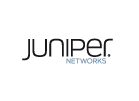Cisco Visual Networking Index Projects Network-Connected Devices Will Outnumber People 2 to 1; a Million Minutes of Internet Video to Be Transmitted Per Second
Cisco predicts that the number of network-connected devices will be more than 15 billion, twice the world’s population, by 2015. In the fifth annual Cisco® Visual Networking Index (VNI) Forecast (2010-2015) released today, the company also said the total amount of global Internet traffic will quadruple by 2015 and reach 966 exabytes per year.
The projected increase of Internet traffic between 2014 and 2015 alone is 200 exabytes, which is greater than the total amount of Internet Protocol traffic generated globally in 2010. On the verge of reaching 1 zettabyte, which is equal to a sextillion bytes, or a trillion gigabytes by 2015, global IP traffic growth is driven by four primary factors, according to Cisco. They are:
An increasing number of devices: The proliferation of tablets, mobile phones, connected appliances and other smart machines is driving up the demand for connectivity. By 2015, there will be nearly 15 billion network connections via devices — including machine-to-machine — and more than two connections for each person on earth.
More Internet users: By 2015, there will be nearly 3 billion Internet users –more than 40 percent of the world’s projected population.
Faster broadband speed: The average fixed broadband speed is expected to increase four-fold, from 7 megabits per second in 2010 to 28 Mbps in 2015. The average broadband speed has already doubled within the past year from 3.5 Mbps to 7 Mbps.
More video: By 2015, 1 million video minutes –the equivalent of 674 days –will traverse the Internet every second.
Overview
The annual Cisco VNI Forecast was developed to estimate global Internet Protocol traffic growth and trends. Widely used by service providers, regulators, and industry influencers alike, the Cisco VNI Forecast is based on in-depth analysis and modeling of traffic, usage and device data from independent analyst forecasts. Cisco validates its forecast, inputs and methodology with actual traffic data provided voluntarily by global service providers and consumers alike.
To help customers learn more and visualize IP traffic growth drivers and trends, Cisco VNI Forecast can provide customized views relevant to customer needs.
The Cisco VNI Forecast widget provides customized views of the growth of various network traffic types around the globe (revised for this 2010 – 2015 forecast period).
Cisco VNI Forecast and Methodology, 2010 – 2015 White Paper provides the full detailed findings of the study.
The new Cisco VNI Forecast Highlights Tool provides key forecast predictions in short sound bites that can be chosen on a global, regional or country level (these include device, traffic and network speed projections).
The Cisco VNI Forecast Infographic provides a downloadable image available for use in blogs and social media.
Total Global IP Traffic in “Bytes”
Global IP traffic is expected to reach 80.5 exabytes per month by 2015, up from approximately 20.2 exabytes per month in 2010.
Average global IP traffic in 2015 will reach 245 terabytes per second, equivalent to 200 million people streaming an HD movie (1.2 Mbps) simultaneously every day.
Regional IP Traffic Trends
By 2015, the Asia Pacific region will generate the most IP traffic (24.1 exabytes per month), surpassing last year’s leader, North America (22.3 exabytes per month), for the top spot.
The fastest-growing IP-traffic regions for the forecast period (2010 – 2015) are the Middle East and Africa (which had a 52-percent compound annual growth rate, for an eightfold growth), surpassing last year’s leader Latin America (48 percent CAGR, sevenfold growth).
Primary Growth Driver: Consumer Video
The global online video community will increase by approximately 500 million users by 2015, up from more than 1 billion Internet video users in 2010.
Global Device Growth
In 2010, PCs generated 97 percent of consumer Internet traffic. This will fall to 87 percent by 2015, demonstrating the impact that devices like tablets, smartphones and connected TVs are having on how consumers access and use the Internet.
Accessing the Internet on Web-enabled TVs continues to grow and by 2015, 10 percent of global consumer Internet traffic and 18 percent of Internet video traffic will be consumed via TVs.
3DTV and HD (Advanced Video)
Global advanced video traffic, including three-dimensional (3-D) and high-definition TV (HDTV), is projected to increase 14 times between 2010 and 2015.
Mobile Broadband
Global mobile Internet data traffic will increase 26 times from 2010 to 2015, to 6.3 exabytes per month (or 75 exabytes annually).
Global File Sharing
By 2015, global peer-to-peer traffic will account for 16 percent of global consumer Internet traffic, down from 40 percent in 2010.
Global Business IP Traffic
Business IP video conferencing is projected to grow sixfold over the forecast period, growing more than two times as fast as overall business IP traffic, at a CAGR of 41 percent from 2010 to 2015.


